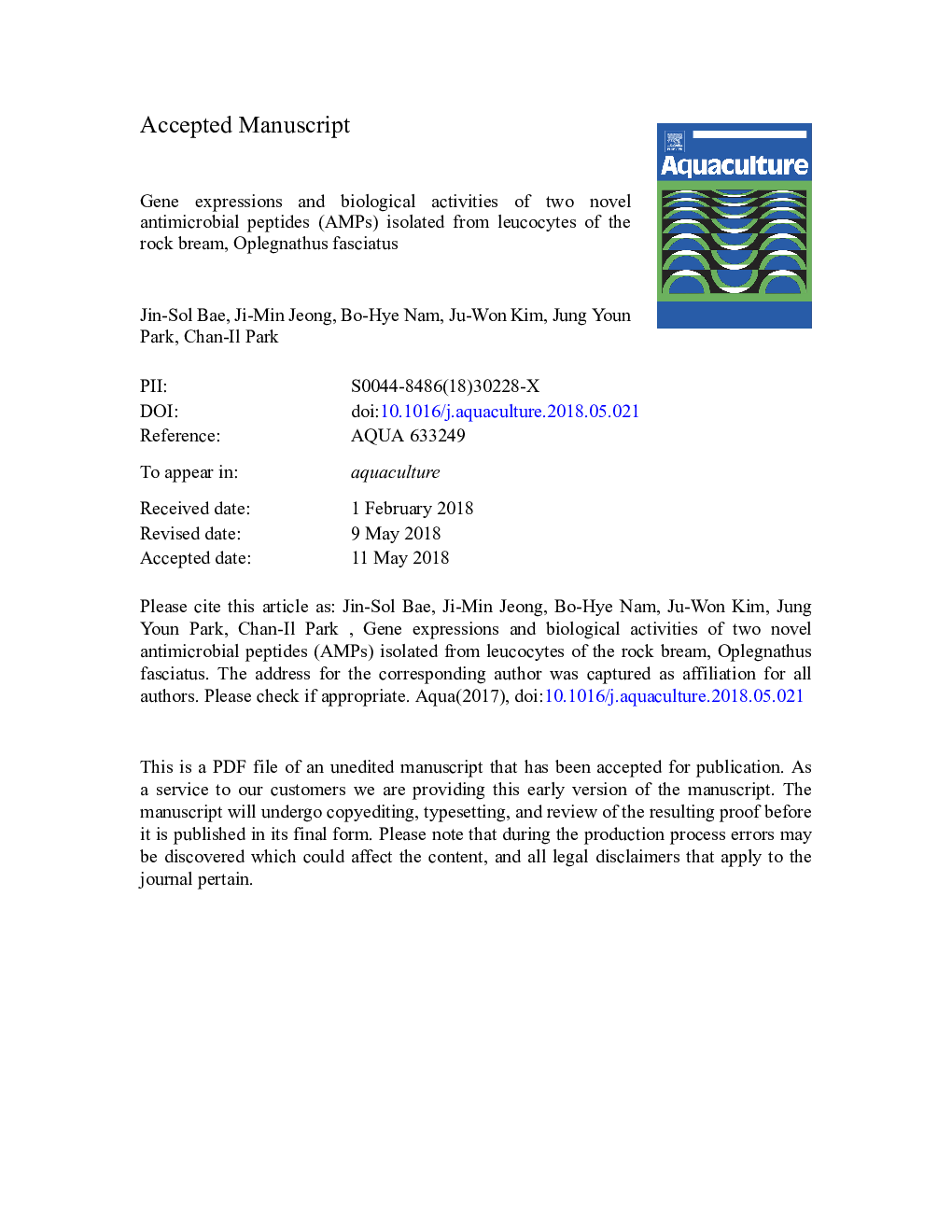| Article ID | Journal | Published Year | Pages | File Type |
|---|---|---|---|---|
| 8493003 | Aquaculture | 2018 | 42 Pages |
Abstract
Antimicrobial peptides (AMPs) process strong antimicrobial activity and play a major role in protect host against pathogens. Piscidins, one of main AMPs of fish, are considered as crucial effectors of innate immune response as well as modulators of adaptive immune response. In this study, we discovered two rock bream piscidin paralogs (RP6 and RP7) from leucocytes of the rock bream and investigated their gene expression patterns and antimicrobial and cytotoxic activities. Their open reading frames (ORF) consisted of 240 and 249 base pairs (bp), encoding 80 and 83 amino acid residues, respectively, and both conserved AMP 12 domain. The predicted tertiary structure of the AMP 12 domain of RP6 and RP7 is an amphipathic alpha-helix structure. RP6 and RP7 mRNAs are ubiquitously expressed in healthy fish, the most expression of both in the PBLs. RP6 expression was more induced after pathogen infection relative to that of RP7, while RP7 exhibited stronger antimicrobial and haemolytic activity compared with RP6. Ultimately, the powerful antibacterial effect of RP7 would allow a small amount of RP7 to protect the host from pathogens and RP6 may have other immune response function in rock bream in addition to direct pathogen killing, suggesting that RP6 and RP7 have important function in rock bream immune system. Also, the studies on these RP6 and RP7 will be useful as important data on the substitution of antimicrobials in aquaculture of rock bream.
Related Topics
Life Sciences
Agricultural and Biological Sciences
Aquatic Science
Authors
Jin-Sol Bae, Ji-Min Jeong, Bo-Hye Nam, Ju-Won Kim, Jung Youn Park, Chan-Il Park,
